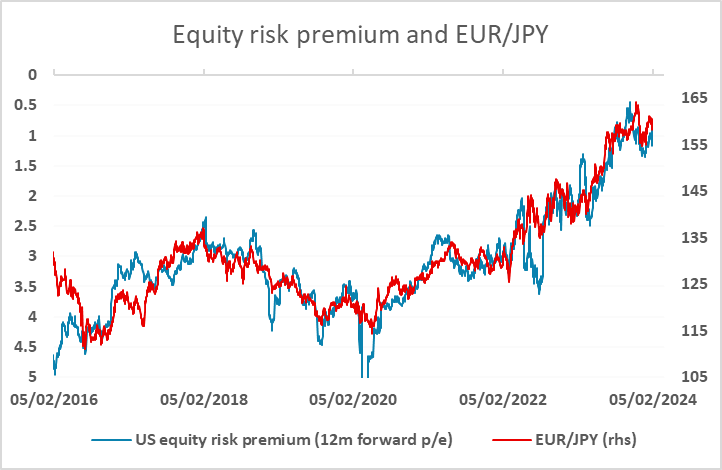FX Daily Strategy: APAC, February 6th

Japan labour earnings data could set the JPY tone
RBA likely to leave policy unchanged, but AUD still has downside risks against the USD
Rise in front end EUR yields hard to justify
JPY gains on the crosses on Monday may not be sustained unless equities show more weakness
Japan labour earnings data could set the JPY tone
RBA likely to leave policy unchanged, but AUD still has downside risks against the USD
Rise in front end EUR yields hard to justify
JPY gains on the crosses on Monday may not be sustained unless equities show more weakness
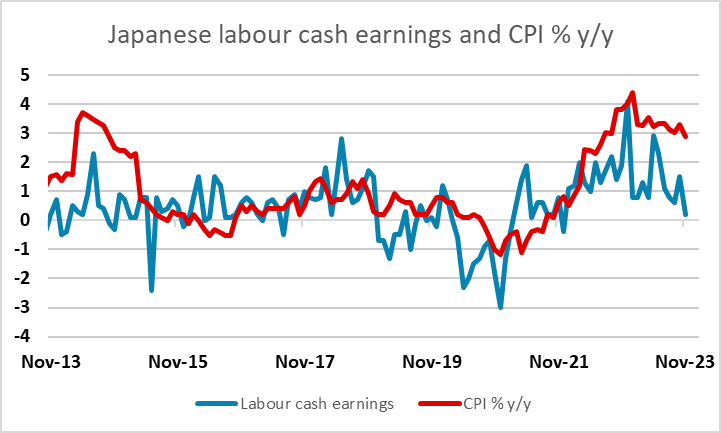
In what is a relatively quiet day for data and events, the main focus may be on the Japanese labour cash earnings data due out at the Asia open. The weakness of the December data was a major factor undermining expectations of BoJ tightening this year, and consequently pulling JGB yields and the JPY lower. The comments from the BoJ and the Japanese government have made I clear that the weakness of wage growth is a major concerns, and they are looking for significant wage increases in the spring wage round to justify any move away from ultra easy policy. The December labour cash earnings data could nevertheless have a significant impact. Further weakness could further undermine expectations of tightening and potentially send USD/JPY towards 150 given the strength of the USD. But if the November weakness is reversed, there is potential for a significant JPY rally given the current high level of USD/JPY relative to the historic yield spread correlation.
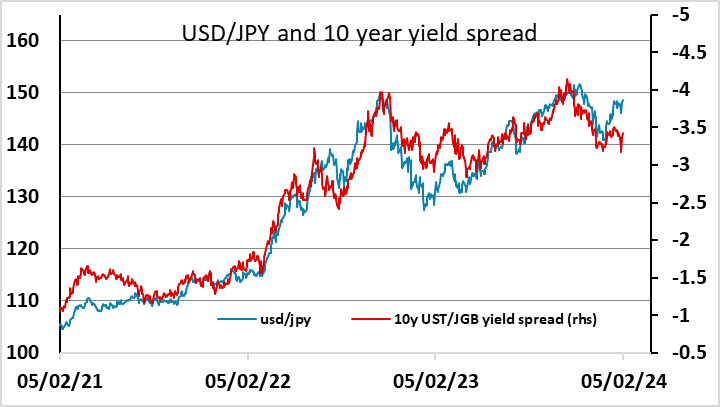
Also in Asian hours we have the RBA meeting. The RBA will keep rates on hold as Q4 CPI continued to moderate after a brief spike in Q3. We believe there will be no change in forward guidance as CPI is still far from RBA's target range. But Q4 CPI showed 4.1% y/y growth, slowing from 5.4% in Q3 and missed estimates at 4.3%, suggesting there is likely to be scope for cuts later in the year. At this stage the market is pricing the first cut around the August meeting with a probable further cut by year end, but this is still a much more modest easing programme than is priced into the US or European curves. AUD/USD has fallen as US yields have risen since the employment report, and given the potential for further rises in US yields, and the only modest rate cuts priced into the Australian curve, the risks still look to be towards the AUD downside.
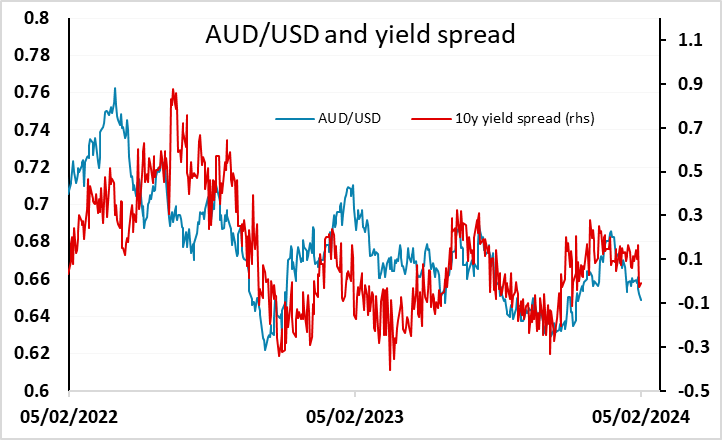
There isn’t a great deal that is likely to be market moving on the European or US calendars on Tuesday, and it remains hard to oppose USD strength given the strong US employment report. However, it is noticeable that in spite of the strength of the employment report, and the big rise in US yields that has resulted, there has been relatively little yield spread widening between the US and Europe, as European yields have risen with the US. This is to be expected at the long end of the curve, where the correlation is strong and global factors dominate, but is more surprising at the front end of the curve, which is more dominated by policy, as the European economy is not showing the evidence of strength we are seeing in the US. So although EUR/USD looks a little low given the moves we have seen in front end yield spreads, it is reasonable to expect some renewed widening in these spreads as the ECB is likely to cut faster than the Fed.
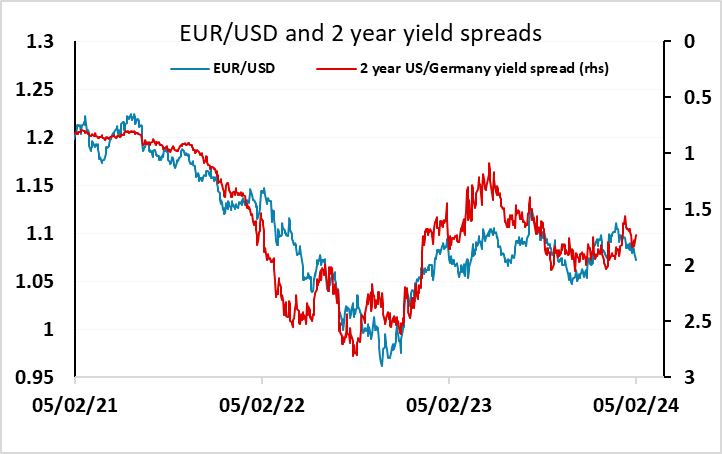
We did see some weakening in the risk sensitive currencies on Monday, as equities fell back in response to the widening in US yields. However, we are a little wary of this move. While there is a strong negative correlation between equity moves and the USD, JPY crosses tend to move much more with equity risk premia than with equity prices themselves. This means that equity declines that are due to higher yields should not be expected to have appositive impact on the JPY on the crosses, as they don’t represent a rise in risk premia. Indeed, the opposite is usually true. Of course, form a yield spread perspective there is a strong case for a JPY recovery, both against the USD and particularly on the crosses, but until we see a rise in risk premia, or some evidence of a break in the correlation with risk premia, we wouldn’t assume the JPY will sustain the cross gains seen on Monday.
